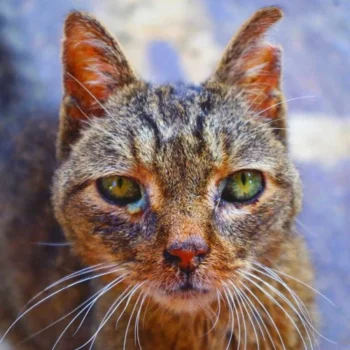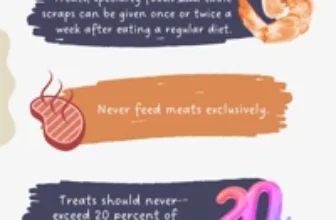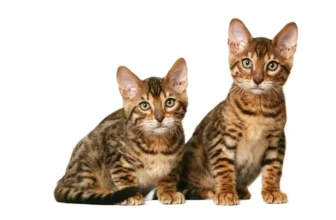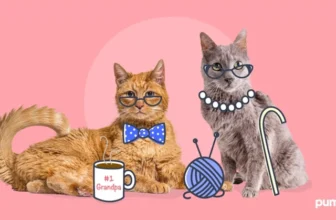As a California Spangled cat owner, it can be worrying to see your pet become unwell. However, it’s important to keep an eye out for signs and symptoms of illness in order to catch any issues early on and seek medical attention as necessary. In this article, we’ll explore the common signs of illness that you should be aware of with your California Spangled cat, when to take them to the vet, and how you can prevent illness in the first place. Let’s dive in and learn more about keeping your furry companion healthy and happy!
Common signs of illness in a California Spangled cat
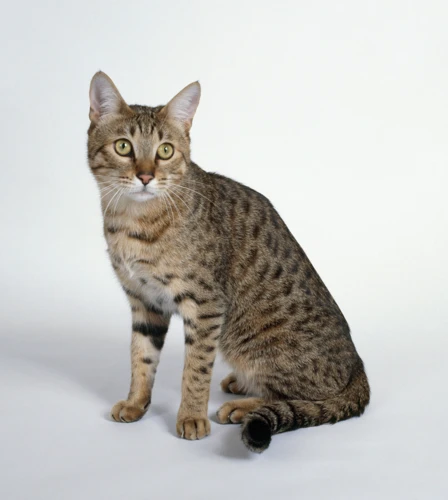
It can be difficult to determine if your California Spangled cat is feeling under the weather. Cats are naturally skilled at hiding their illnesses, which can make it challenging to identify any changes in their behavior or habits that may signal a problem. However, being observant and understanding the common signs of illness can help you catch health issues early on and seek medical attention for your feline friend. In this section, we’ll explore several common signs of illness in a California Spangled cat, including changes in appetite, behavior, and physical symptoms. Properly identifying these signs could make the difference in your cat’s health.
1. Changes in appetite and water consumption
Changes in appetite and water consumption are important indicators of a California Spangled cat’s health. As a cat owner, it is important to monitor the cat’s appetite and water intake because significant changes in either can signal a health problem. This could be due to a wide range of issues such as dental problems, kidney issues, or even infections. Here are some signs to look out for:
| Change in Appetite: | Change in Water Consumption: |
|---|---|
| Increased appetite: If your California Spangled cat suddenly starts to eat more than usual, it could be a sign of a problem such as diabetes or hyperthyroidism. | Increased thirst: If your cat is drinking more water than usual, it could be a sign of kidney disease, diabetes, or other underlying illness. |
| Decreased appetite: If your cat is eating less than usual, it could be a symptom of a wide range of issues such as dental pain, liver disease, or even cancer. | Decreased thirst: If your cat is drinking less water than usual, it is a sign of dehydration and should be seen by a vet. |
| Changes in food preferences: If your cat refuses to eat or seems to prefer one type of food over another, it may indicate an underlying health issue such as allergies or gastrointestinal problems. | Changes in water bowl habits: A California Spangled cat who stops drinking from their usual water bowl may be experiencing mouth pain or other issues related to dental health. |
If you notice any significant changes in your California Spangled cat’s appetite or water intake, it is important to take them to the vet immediately. Keeping up with routine check-ups and preventive care can also help to ensure that small issues are caught before they become big problems. Regular visits to the vet can help to detect early warning signs of illness, allowing for earlier treatment and potentially leading to a better outcome. You can learn more about the importance of check-ups by reading our article on “Cali Spangled Vet Check-Ups: Prevention is the Best Medicine”.
2. Changes in behavior
Changes in behavior can be one of the earliest indications that something is not right with your California Spangled cat. Behavioral changes can be wide-ranging and may include a loss of interest in activities your cat once enjoyed, becoming more aggressive, or hiding away.
Another behavioral change that could be signaling a health issue is your cat becoming more vocal than usual. California Spangled cats are typically quiet, so if your cat is overly vocalizing, it could be a sign of distress.
If your cat is experiencing behavioral changes, there are a few things you can do to help:
| 1. | Observe your cat’s behavior and document any changes; this will be helpful information for your vet. |
| 2. | Try to identify any changes in your cat’s environment, such as a new pet, a change in diet, or a recent move to a new home. |
| 3. | Make sure your cat’s litter box is clean and accessible. If your cat is avoiding using it, this could be a sign of a urinary tract infection (UTI). |
It’s important to take your cat to the veterinarian if any behavioral changes persist or are accompanied by other symptoms such as vomiting, diarrhea, or lethargy. Behavioral changes that are related to physical health issues can improve with treatment, so seeking veterinary care as early as possible is key to a successful outcome.
In addition to regular vet visits and check-ups, there are some healthcare tips specific to California Spangled cats that can keep them healthy and happy. Consider creating a healthcare plan for your cat, which should include regular check-ups, vaccinations, and preventive care. A well-balanced diet that meets your cat’s nutritional needs, along with proper hydration, can also help to prevent many health issues.
Proper hygiene practices, such as regular grooming, dental care, and spaying or neutering your cat, can also help prevent common health problems. Additionally, alternative healthcare options such as acupuncture and herbal remedies have shown promise in treating certain feline health conditions.
By taking proactive steps to care for your California Spangled cat, you can help prevent health issues before they arise and ensure that your furry friend stays healthy and happy for years to come.
3. Vomiting or diarrhea
Vomiting and diarrhea are common symptoms of many health problems. Your California Spangled cat may experience these symptoms due to a variety of reasons, such as dietary indiscretions, food intolerance or allergies, stress, infections, or other illnesses.
Vomiting can occur in cats of any age, and can range from occasional to frequent. Depending on the cause, vomiting can be accompanied by other symptoms, such as lethargy, loss of appetite, dehydration, and abdominal pain. If your cat vomits once or twice and seems otherwise healthy, it might not be anything serious. However, if your cat is vomiting repeatedly or excessively, or if you notice blood, bile, or foreign objects in the vomit, you should take your cat to the vet immediately. Some potential causes of vomiting in cats are listed below:
| Possible causes of vomiting |
|---|
| Dietary indiscretions (eating too fast, eating non-food items) |
| Food intolerance or allergies |
| Parasites (intestinal worms) |
| Infections (bacterial, viral, fungal) |
| Obstructions (hairballs, foreign bodies) |
| Inflammatory bowel disease (IBD) |
| Cancer (lymphoma, gastric adenocarcinoma) |
On the other hand, diarrhea is defined as the increased frequency, fluidity, and volume of fecal matter. Diarrhea can be acute (sudden onset and short duration) or chronic (persistent or recurrent). Diarrhea can cause dehydration, electrolyte imbalances, malnutrition, and other complications if left untreated. The following are some potential causes of diarrhea in cats:
| Possible causes of diarrhea |
|---|
| Dietary changes (new food, overfeeding, leftovers) |
| Food intolerance or allergies |
| Parasites (intestinal worms, protozoa) |
| Infections (viral, bacterial, fungal) |
| Inflammatory bowel disease (IBD) |
| Cancer (lymphoma, adenocarcinoma) |
| Metabolic disorders (liver disease, pancreatitis, hyperthyroidism) |
If your California Spangled cat experiences vomiting or diarrhea, do not hesitate to reach out to your veterinarian. In some cases, home remedies may suffice, such as withholding food for a few hours or gradually changing your cat’s diet. However, if your cat’s symptoms persist or worsen, or if your cat shows signs of pain, fever, or dehydration, seeking veterinary care promptly is essential to rule out serious underlying conditions and to prevent complications.
If you want to learn more about common health problems that may affect your California Spangled cat, click on one of the links below to read our related articles:
– Healthcare Plans for California Spangled Cats
– Top 5 Vitamins and Minerals for California Spangled Cats
– Cali Spangled Cat Diet and Health
– Cali Spangled Cat: Spay and Neuter
– Allergies in California Spangled Cats
– Cali Spangled Cat Dental Problems and Prevention
4. Difficulty urinating
Difficulty urinating is another common sign of illness in California Spangled cats. This could indicate that your cat is suffering from urinary tract problems, which are common in cats.
Some signs to look out for include:
- Straining: Your cat may appear to be struggling or straining to urinate.
- Frequent Visits to Litter Box: If your cat is constantly visiting the litter box without producing much urine, this is a sign there may be a problem.
- Blood in Urine: Blood in your cat’s urine could indicate a urinary tract infection or other issues.
- Licking Genital Area: If your cat is constantly licking its genital area, it could be a sign of discomfort or pain.
It is important to take note of these symptoms because urinary tract problems can become serious very quickly, especially in male cats. If your cat is unable to pass urine, this could lead to a life-threatening condition called urethral obstruction.
If you notice any of these symptoms, take your cat to the vet as soon as possible. They will be able to perform a physical exam and recommend further testing if necessary. Treatment may involve antibiotics or other medications to help ease inflammation and pain.
In addition to seeking veterinary care, there are steps you can take to prevent urinary tract problems in your California Spangled cat. One way to do this is to encourage your cat to drink plenty of water. You can increase their water intake by providing a water fountain or adding water to their food. Feeding a diet specifically formulated for urinary health can also be helpful in preventing urinary tract issues.
5. Lethargy or lack of energy
One sign that your California Spangled cat might be ill is if they are experiencing lethargy or a lack of energy. If your cat is usually playful and active but suddenly seems sluggish and uninterested in their usual activities, it could be a sign of an underlying health issue.
Here are some possible causes of lethargy or lack of energy in cats:
- Pain: Cats are masters at hiding pain, but it can cause them to become less active than usual. Keep an eye out for other signs of pain, such as limping or avoiding certain movements.
- Illness: Lethargy is a common symptom of many illnesses in cats, from infections to chronic conditions. If your cat seems unwell in other ways as well, like a change in appetite or vomiting, it could be a sign of something more serious.
- Dehydration: If your cat isn’t drinking enough water, they could become lethargic or weak. Make sure they have access to fresh, clean water at all times, and consider adding wet food to their diet to increase their overall hydration levels.
- Stress or anxiety: Just like humans, cats can experience stress and anxiety that affects their behavior and energy levels. Consider any recent changes in their environment that could be causing them to feel unsettled.
It’s important to watch out for any other symptoms that your cat might be experiencing, especially if they are showing multiple signs of illness. If your cat is lethargic or seeming less energetic than usual for more than a day or two, it’s a good idea to take them to the vet for a check-up to determine the cause of their behavior.
6. Respiratory problems
Respiratory problems are common in California Spangled cats and can range from minor infections to severe respiratory distress. It is important to pay attention to any symptoms that may indicate respiratory issues in your cat.
Here are some signs to watch out for:
| Signs of Respiratory Problems in a California Spangled Cat |
|---|
| Coughing |
| Sneezing |
| Wheezing |
| Difficulty breathing |
| Nasal discharge |
| Open-mouth breathing |
| Lethargy or lack of energy |
If your California Spangled cat is experiencing any of these symptoms, it is important to take them to a vet as soon as possible. Respiratory problems can quickly escalate, especially if the underlying cause is not addressed promptly.
Common causes of respiratory problems in cats include viruses, bacterial infections, allergies, and environmental factors. The vet may need to perform diagnostic tests to determine the underlying cause of the respiratory issues and recommend a treatment plan.
In some cases, respiratory problems can be managed with medication or environmental changes. However, it is important to follow the vet’s instructions closely to ensure your cat is receiving the appropriate treatment.
Remember, respiratory problems should not be taken lightly. Prompt veterinary attention can make all the difference in your cat’s health and well-being.
7. Skin and coat problems
Cats are known for their soft, smooth fur, but a California Spangled cat who is sick may show signs of skin and coat problems. These symptoms may indicate a skin infection, pest infestation, or even a more serious underlying condition.
Here are some common skin and coat problems to look out for:
- Excessive shedding or hair loss
- Visible irritations or sores on the skin
- Dull or dry fur
- Flaking or scabbing skin
- Excessive scratching, licking or biting of the skin
- Bald patches or uneven hair growth
If you notice any of these symptoms, take a closer look at your cat’s skin. Does it appear dry or irritated? Are there visible pests, such as fleas or ticks? Pay attention also to your cat’s grooming habits. Is your cat grooming less or more than usual?
Some potential causes of skin and coat problems include:
- Parasite infestations such as fleas, ticks, or mites
- Allergic reactions, such as those caused by food or environmental allergens
- Bacterial or fungal infections
- Hormonal imbalances
- Stress or anxiety
- Underlying medical conditions such as hyperthyroidism or cancer
If you suspect that your California Spangled cat is experiencing skin and coat problems, a visit to the vet is the best course of action. The vet will be able to diagnose the underlying cause of the issue and develop an effective treatment plan. In some cases, medication or even surgery may be necessary to restore your cat’s health.
To prevent skin and coat problems from occurring, it is important to:
- Regularly groom your cat with a brush or comb to remove loose fur and identify any potential issues early on
- Maintain a clean and hygienic living environment for your cat
- Provide proper nutrition and hydration for your cat’s optimal health
- Monitor your cat’s behavior and mood for signs of stress or anxiety and address it promptly
- Regularly visit the vet for check-ups and preventive care, including vaccinations and flea and tick prevention
By taking these steps, you can help to keep your California Spangled cat healthy and happy, with a vibrant and healthy coat to match.
When to take your California Spangled cat to the vet
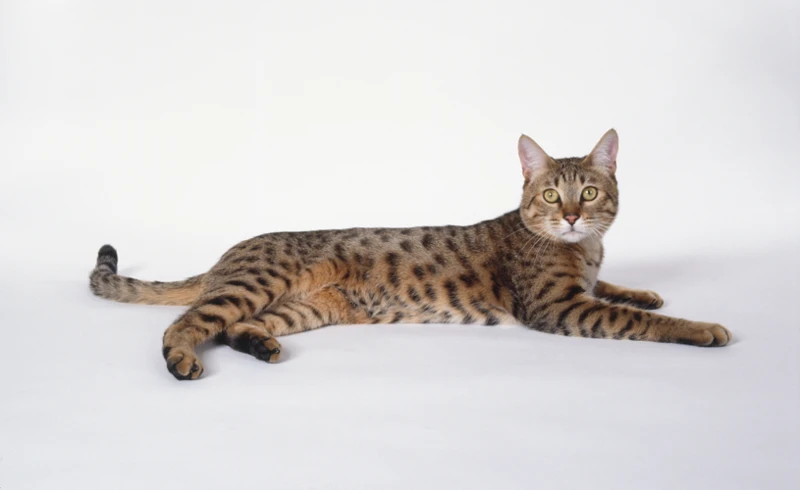
As a responsible cat owner, it is crucial to know when your California Spangled cat requires medical attention from a veterinarian. While some symptoms of illness are easy to identify, others may go unnoticed until they worsen. It is essential to be attentive to your cat’s behavior and to recognize any unusual or persistent symptoms. In this section, we will discuss some of the warning signs that indicate your California Spangled cat needs medical intervention and how to recognize when it’s time to take them to the vet.
1. Persistent symptoms
Persistent symptoms in California Spangled cats could be an indication of serious underlying health problems. Monitoring your cat’s behavior, appetite, and habits is essential to identifying potential issues and addressing them before they worsen. Some common persistent symptoms to look out for include:
| Symptoms | Possible Causes |
|---|---|
| Weight loss | Hyperthyroidism, diabetes, liver disease, cancer |
| Coughing | Asthma, heart disease, respiratory infection |
| Lethargy or lack of energy | Anemia, kidney disease, cancer, diabetes, infection |
| Increased drinking and urination | Diabetes, kidney disease, hyperthyroidism |
| Loss of appetite | Infection, dental disease, cancer, kidney disease, liver disease |
| Changes in breathing | Asthma, pneumonia, heart disease |
If your California Spangled cat is experiencing any of these symptoms, it’s crucial to take them to the vet as soon as possible. Ignoring persistent symptoms can lead to further health complications and a decline in quality of life for your furry friend.
In addition to monitoring your cat’s symptoms, it’s important to maintain regular check-ups with your vet to ensure that any potential health issues are caught early. This can prevent more serious health problems from developing and ensure that your California Spangled cat stays healthy and happy for years to come.
2. Changes in behavior
Changes in behavior can be a strong indicator that something is wrong with your California Spangled cat. If your cat is normally social and outgoing but suddenly becomes withdrawn and reclusive, it’s best to keep an eye on them. However, if the behavior continues for an extended period it may be time to take your furry friend to the vet. Here are some changes in behavior that could be signs of illness:
| Symptom | Description |
|---|---|
| Aggression | If your normally mild-mannered California Spangled cat suddenly becomes aggressive and starts to hiss or scratch it might be a sign of pain or discomfort. |
| Excessive Licking or Grooming | If your cat starts licking or grooming excessively, this could be a sign of pain or discomfort. The area the cat is excessively grooming could be the area that is bothering them. |
| Isolation | If your cat is normally social and outgoing but suddenly becomes withdrawn and doesn’t want to be around people, this could be a sign of a health issue. |
| Lack of grooming | Cats are normally clean creatures. If you notice that your cat has lost interest in grooming, their coat becomes matted or has a strong odor, this could be a sign of an underlying health issue. |
| Changes in sleep patterns | If your cat changes its sleep pattern drastically or is sleeping more than usual, this could be a sign of illness. |
It’s important to pay attention to changes in behavior as they can sometimes be easy to overlook. If in doubt, always seek the advice of a qualified veterinarian.
3. Changes in appetite and water consumption
California Spangled cats are known to be active and have healthy appetites. However, a sudden change in appetite or water consumption can be a sign of illness.
Below is a table outlining the possible causes and symptoms associated with changes in appetite and water consumption in a California Spangled cat:
| Possible Causes | Symptoms |
|---|---|
| Illness or Disease: A variety of illnesses or diseases, such as diabetes or kidney disease, can cause changes in appetite and water consumption. | Loss of appetite, excessive water drinking, weight loss or gain, vomiting, diarrhea |
| Dental Problems: Dental issues such as gum disease or tooth decay can make it difficult and painful for your cat to eat, leading to a loss of appetite. | Bad breath, drooling, pawing at the mouth, reluctance to eat hard foods, bleeding gums |
| Changes in Diet: Changing your cat’s food suddenly or feeding them inappropriate food can cause gastrointestinal disturbances. | Diarrhea, vomiting, lack of appetite |
| Anxiety or Depression: Just like humans, cats can suffer from anxiety or depression which can affect their appetite and water intake. | Loss of appetite, lethargy, increased hiding or vocalization, excessive sleeping, refusal to drink water |
It is important to note that any sudden changes in appetite or water consumption should be checked by a vet to ensure there are no underlying health issues. Depending on the cause of the change in appetite, different treatment options may be recommended by your vet.
As a responsible cat owner, it is important to monitor your cat’s eating and drinking habits to ensure they stay healthy and happy.
4. Changes in litter box habits
One sign that your California Spangled cat may be sick is a change in their litter box habits. This could include things like urinating outside of the litter box or not using it at all. It may also include a noticeable change in the amount or frequency of urination or defecation.
Possible Causes:
There are a variety of medical issues that could be causing changes in your cat’s litter box habits. Some of the most common reasons for such behavior include urinary tract infections, bladder stones, and kidney disease. In some cases, your cat may also be experiencing constipation or diarrhea as a result of a digestive issue or dietary change.
What to Do:
If you notice changes in your cat’s litter box habits, it is important to schedule an appointment with your vet as soon as possible. Your vet will be able to perform a thorough examination to determine the underlying cause of the issue. They may also recommend additional testing, such as blood or urine tests, to get a better idea of what might be going on.
Preventative Measures:
To prevent changes in your cat’s litter box habits, it is important to keep up with regular vet check-ups and to address any medical issues promptly. You can also help prevent urinary tract infections and other similar conditions by encouraging your cat to drink plenty of water and providing them with high-quality, nutritious food. Make sure your cat has access to a clean litter box at all times, and consider investing in a litter box with low sides to make it easier for them to use.
Conclusion:
Changes in litter box habits are a common sign of illness in California Spangled cats, and should be taken seriously. By paying close attention to your cat’s behavior and taking the appropriate steps to address any issues that arise, you can help ensure that your furry friend stays healthy and happy for years to come.
5. Acute symptoms
Acute symptoms in a California Spangled cat can arise suddenly and should be taken seriously. If you notice any of the following symptoms, you should take your cat to the vet immediately:
- Seizures: Seizures can happen due to various reasons, including a head injury, toxin exposure, or an underlying neurological condition. If your cat experiences a seizure, it can be frightening for both you and your feline friend.
- Trauma: If your cat has been in an accident or suffered a severe injury, it is best to take them to the vet as soon as possible. Trauma can cause internal injuries that may not be immediately apparent, and delaying treatment can be dangerous.
- Difficulty breathing: If your cat is experiencing difficulty breathing, it could be a sign of respiratory distress. Respiratory problems can be caused by various factors such as infections, allergies, or asthma. In some cases, respiratory distress can be life-threatening, and immediate medical attention is necessary.
- Uncontrolled bleeding: If your cat is bleeding uncontrollably, it is essential to seek veterinary care right away. Bleeding can be caused by various factors such as injury, a clotting disorder, or exposure to toxins. Uncontrolled bleeding can lead to shock and even death if not treated promptly.
- Allergic reactions: If your cat has an allergic reaction, it can cause swelling, hives, and difficulty breathing. Allergic reactions can happen due to exposure to certain allergens such as insect bites or certain foods. It is crucial to seek veterinary care immediately in case of an allergic reaction.
If you notice any of these symptoms in your California Spangled cat or any other sudden changes in behavior or appearance, it is best to seek veterinary care right away. Delays in treatment can cause serious, and in some cases, irreversible damage to your cat’s health.
Preventing illness in a California Spangled cat
As much as we love our furry friends, it can be heartbreaking to see them suffer from illness. Fortunately, there are steps you can take to help prevent your California Spangled cat from getting sick. By following these prevention tips, you can help keep your feline friend healthy and thriving for years to come. Let’s take a closer look at what you can do to protect your cat from illness.
1. Regular check-ups with the vet
Regular check-ups with the vet are crucial for maintaining the health of your California Spangled cat. These appointments allow your vet to detect any potential health issues before they become serious problems. During a check-up, your vet will perform a physical examination of your cat to check for any abnormalities, assess their weight, and listen to their heart and lungs. They may also conduct blood and urine tests or order other diagnostic tests to ensure your cat’s internal health is in optimal condition.
Why are regular check-ups important?
While your cat may appear healthy and behave normally, regular check-ups are important for detecting underlying health conditions that may not show any obvious symptoms. Issues such as parasites, dental problems, and underlying organ problems can go undetected without regular check-ups. Early detection of any potential health issues can prevent small problems from becoming more severe and require more extensive treatments. Additionally, regular check-ups provide an opportunity to discuss any concerns about your cat’s health or behavior with your vet.
How often should your California Spangled cat see the vet?
The frequency of regular check-ups may vary based on age, health, and overall wellness of your California Spangled cat. Generally, adult cats should see the vet at least once a year, while senior cats or cats with pre-existing conditions may require more frequent visits. Your vet can help guide you on the frequency of check-ups that are appropriate for your cat’s individual health needs.
To summarize, regular check-ups with the vet are an essential part of keeping your California Spangled cat healthy. These visits help detect potential health issues early on and provide an opportunity to discuss any concerns with your vet. Be sure to schedule these appointments regularly to ensure the long-term health and well-being of your furry friend.
| Benefits of Regular Check-ups | Recommended Frequency |
|---|---|
| Early detection of health issues | At least once a year for adult cats |
| Opportunity to discuss concerns with vet | More frequent visits for senior cats or those with pre-existing conditions |
| Prevent small problems from becoming more severe | Individualized based on cat’s health needs |
2. Vaccinations and preventive care
One of the most important steps in preventing illness in a California Spangled cat is to ensure they receive proper vaccinations and preventive care. Vaccinations help protect cats from a variety of contagious and potentially fatal illnesses. It is important to discuss with your vet which vaccines are necessary for your cat based on their age, health history, lifestyle, and risk factors. Here are some commonly recommended vaccines for cats:
- Feline distemper (FVRCP): This vaccine protects against common respiratory viruses and other infections, including feline distemper.
- Rabies: Rabies is a fatal virus that can infect cats and humans. In California, rabies vaccination is required by law for all cats.
- Feline leukemia (FeLV): This vaccine is recommended for cats who spend time outdoors or live with other cats. Feline leukemia is a viral disease that weakens a cat’s immune system and can lead to other infections and diseases.
In addition to vaccinations, there are other preventive measures you can take to keep your California Spangled cat healthy. Regular check-ups with the vet can help catch and treat any health issues early on. It is also important to maintain a healthy diet and provide plenty of fresh water for your cat. Good hygiene practices, such as regular grooming and cleaning of litter boxes, can help prevent the spread of infections. By taking these steps, you can help ensure your California Spangled cat stays healthy and happy for years to come.
3. Proper nutrition and hydration
As a California Spangled cat owner, it’s essential to provide your furry friend with proper nutrition and hydration to maintain their overall health. Here are some tips to ensure your cat is getting the appropriate nutrition and hydration they need:
- Quality Cat Food: Providing your cat with high-quality cat food is crucial. Look for cat foods that contain all the necessary nutrients, minerals, and vitamins balanced with quality protein sources. Avoid cheap cat foods as they might contain ingredients that may harm your cat’s health. Consult with your veterinarian to know which cat food is best for your cat’s specific needs.
- Water: Always ensure fresh water is available to your cat. A bowl of clean water should be kept in an easily accessible location. Cats tend to avoid drinking still or stagnant water, so replace the water regularly.
- Wet or Dry Food: Decide whether to feed your cat wet or dry food, or both. Wet food provides more moisture and is essential for cats that might not drink enough water. Dry food is convenient and can help maintain dental health. However, some cats may have a hard time digesting dry food, so it’s good to supplement their meals with wet food or other fluids.
- Avoid Overfeeding: Feed your cat the recommended amount of food daily, and avoid overfeeding. Overfeeding may lead to obesity and other health issues.
- Avoid Human Foods: Refrain from feeding your cat human foods, which can lead to stomach upset, vomiting, diarrhea, or other severe health problems.
- Supplements: In some cases, your cat may require added supplements. Consult with your veterinarian before you give your cat any supplements.
By maintaining a balanced diet, providing fresh water, and avoiding overfeeding, you can help your California Spangled cat maintain a healthy weight, reduce the risk of serious health issues, and promote overall well-being.
4. Good hygiene practices
Maintaining good hygiene practices is essential in keeping your California Spangled cat healthy. It can prevent the spread of diseases, infections, and overall cleanliness. Here are some tips for good hygiene practices that you can adopt:
| Grooming | Brush your cat’s coat regularly to remove any knots or tangles. This will help keep their coat shiny and free of mats. Use a soft brush or comb to avoid hurting your cat’s skin. Bathing your cat is not always necessary, but if you do bathe them, use a mild cat-specific shampoo and warm water. |
| Nail Care | Trim your cat’s nails regularly to prevent them from becoming too long or sharp. Use sharp and clean clippers designed for cats and trim just the tip of the nail. Be careful not to cut their quick, which is a vein running through the nail. |
| Ear Care | Clean your cat’s ears occasionally to remove any dirt or debris. Use a warm, damp cloth and gently wipe around the ear flap. Avoid using cotton swabs or any sharp instruments as they can damage the ear canal. |
| Dental Care | Brush your cat’s teeth regularly to prevent tartar buildup and bad breath. Use a cat-specific toothbrush and toothpaste, and start off by brushing for a few seconds and gradually increasing the time. Dental chews and toys can also help in keeping your cat’s teeth clean and healthy. |
| Litter Box Maintenance | Keep your cat’s litter box clean and well-maintained. Scoop out waste at least once a day and wash the litter box with a mild detergent and water every one or two weeks. This will prevent the buildup of bacteria and odor. |
By adopting these simple hygiene practices, you can keep your California Spangled cat healthy, happy, and clean. Regular grooming, nail care, ear care, dental care, and litter box maintenance can make a significant difference in your pet’s well-being.
Conclusion
In conclusion, keeping your California Spangled cat healthy requires attentive care and regular check-ups with a trusted veterinarian. As a responsible pet owner, it’s important to be aware of the common signs of illness, such as changes in appetite and water consumption, vomiting or diarrhea, respiratory problems, and skin and coat problems. Additionally, changes in behavior and litter box habits can also be indications of an underlying health issue.
If you notice any persistent or acute symptoms, it’s important to take your cat to the vet immediately for diagnosis and treatment. Preventative care, such as vaccinations, proper nutrition and hydration, and good hygiene practices, can also help keep your California Spangled cat healthy and happy.
Remember, your cat is a beloved member of your family, and their health and well-being should be a top priority. By staying informed and proactive about their care, you can help ensure that they lead a long, happy, and healthy life. So, be a responsible cat owner, and give your California Spangled cat the love and care they deserve.
Frequently Asked Questions
1. Can stress make my California Spangled cat sick?
Yes, stress can weaken the immune system, making your cat more susceptible to illnesses. It is important to monitor your cat’s stress levels and take steps to reduce stress when possible.
2. How can I tell if my California Spangled cat is dehydrated?
Check your cat’s hydration level by gently pulling up on the skin at the back of the neck. If the skin snaps back into place instantly, your cat is properly hydrated. If it takes a few seconds to return to place, your cat may be dehydrated.
3. Can dental problems cause illnesses in my California Spangled cat?
Yes, dental problems can lead to infections and other illnesses in cats. Regular dental check-ups are important for maintaining your cat’s overall health.
4. How often should I bring my California Spangled cat to the vet for check-ups?
It is recommended to bring your cat to the vet for check-ups at least once a year. Older cats may require more frequent visits.
5. What are some signs of respiratory problems in my California Spangled cat?
Signs of respiratory problems in cats include coughing, sneezing, wheezing, breathing difficulties, and nasal discharge.
6. Can parasites like fleas and ticks make my California Spangled cat sick?
Yes, fleas and ticks can transmit diseases to your cat. Using preventative measures to control parasites is important for maintaining your cat’s health.
7. What are some common skin and coat problems in California Spangled cats?
Skin and coat problems in cats may include shedding, dandruff, dry skin, hot spots, and itching. These problems can be caused by various factors, including allergies, parasites, and infections.
8. What kind of food should I give my California Spangled cat to prevent illness?
Your cat’s diet should consist of high-quality, balanced nutrition. Look for cat food that features real meat as the primary ingredient and avoid foods with fillers or artificial ingredients.
9. Can over-exercise make my California Spangled cat sick?
Over-exercise can lead to exhaustion, muscle strain, and other health problems in cats. It is important to monitor your cat’s physical activity level and provide ample rest and recovery time.
10. What are the benefits of vaccinations for my California Spangled cat?
Vaccinations are important for protecting your cat from various illnesses, some of which can be life-threatening. Speak to your vet about which vaccinations your cat should receive and when.

